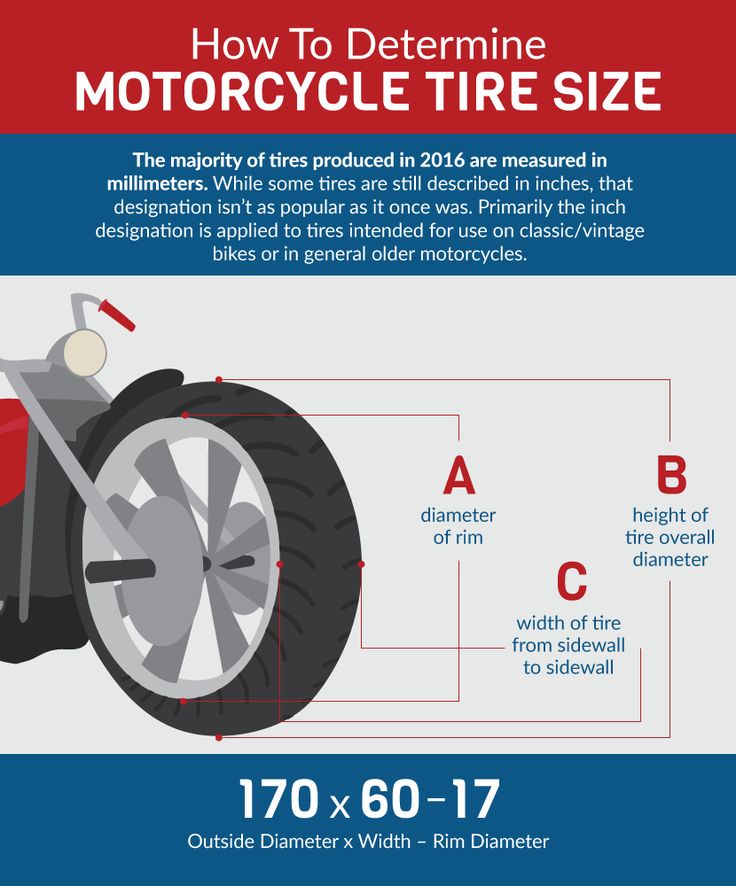Published: 20 August 2010 Updated: 19 November 2014
1 of 1
With your contact on terra firma reliant on two hand-sized patches of rubber it’s hard to know when your bedded-in tyres are up to operating temperature, but there are a couple of factors that will enable you to know without stopping at the side of the road and feeling them with your hand.
The first is the weather and time of day. You may have heard commentators going on about track temperature at MotoGP, and the fact is that dark tarmac absorbs the sun’s heat very well, so on a sunny afternoon it can be 30-40 degrees C and will transfer that heat into your tyres in a few minutes.
Conversely, a cold winter morning is not going to help you, so the tyres will have to generate their heat themselves and it’s going to take a few miles of quite fast work to generate that heat.
The type of riding you are doing makes a difference. If you are creeping through traffic on wet roads, the tyres will struggle to get warm.
But if you’re on an open road with plenty of curves that allow you to lean left and right and some progressive braking from those relatively high speeds, that’s going to help too.
So, when you come up to that tasty bend, think about what sort of riding you’ve been doing before you tip it in hard.
One of the things that’s drilled into us day in and day out as track day riders is the importance of properly warming up your tyres.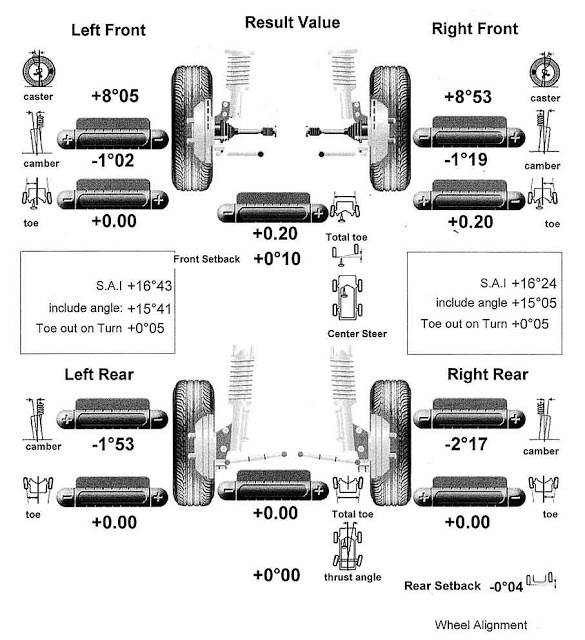 There’s obviously a good reason for this; a tyre that hasn’t reached operating temperature is not going to give you the levels of grip needed to go knee scratching around the track, and trying to go full tilt on cold tyres is only going to end one way 90% of the time.
There’s obviously a good reason for this; a tyre that hasn’t reached operating temperature is not going to give you the levels of grip needed to go knee scratching around the track, and trying to go full tilt on cold tyres is only going to end one way 90% of the time.
The problem is compounded the more ‘racey’ the tyres are too. Road tyres are a little more forgiving and can offer better grip at lower temperatures, but they also reach those temperatures quicker. Going hell for leather on a cold Dunlop slick on the other hand will have you on the deck quicker than you can say “ambition outweighed talent”.
So, we know tyres need to be warmed up, but how do we do it? In this article I cover how to do just that as well as touch on a few other points such as the use of tyre warmers and the myths of riding on brand new rubber.
One thing I have seen on numerous occasions on track days is riders weaving about, almost like they’re dodging a pack of skittish squirrels. Either coming down pit lane or on the sighting laps, they’ll throw the bike from side to side in an attempt to generate some heat in the tyres.
Either coming down pit lane or on the sighting laps, they’ll throw the bike from side to side in an attempt to generate some heat in the tyres.
In reality this weaving does very little to get any considerable or worthwhile heat in the tyres with the modest lean angles that are being achieved, but what is in fact worse is you are actually asking for cornering grip when the tyre is not up to operating temperature.
Again, the lean angles are modest so they’re probably not at a massive risk, but all it takes is one flick and a bit too much lean and you’re asking a lot from the tyre before its ready.
If you watch F1 for example you will no doubt see that all the cars are weaving around as they make their way to their grid position on the warm up lap.
This is because the tyres they use work on a horizontal plane, and it is their sidewall flex that builds the heat into them as they throw them left and right.
It is under strong acceleration and braking that the most heat is built up in the tyres. This is because it is during these times that the carcass of the tyre flexes the most due to the strong forces that are being put through it. That flex is what generates the heat, which then transfers to the tread compound.
This is because it is during these times that the carcass of the tyre flexes the most due to the strong forces that are being put through it. That flex is what generates the heat, which then transfers to the tread compound.
Use smooth but strong acceleration and braking while reasonably upright to slowly build heat into the tyres. During this time in the bends you can be gradually increasing your lean angles (which in turn will further increase the heat being generated) like you would normally do on your first few laps of a session.
There is no set answer to this question as it will take varying amounts of time to get a certain tyre to operating temperature based on things like the bike being used, the tyres, their pressures, the nature of the track and what the weather’s doing.
Personally I have varying amounts of time depending on the track I’m visiting, but as a general rule of thumb if you gradually increase your speed and lean angles over two laps, by the third lap you should have the tyres up to operating temperature and be able to ride at your maximum pace.
As you get more experienced you’ll begin to feel when the grip is there. I know guys that give it just a few corners before they go all out (fresh out of warmers that is), but that’s because they have a very good feel for when they do and do not have grip.
There has been a long standing notion that new tyres won’t offer good grip right from the off and will need to be ‘scrubbed up’ with gentle use before you can go full speed on them. Some people have even used sand paper to rough up the tyre surface, thinking that if they don’t the tyre is going to be treacherous to ride on.
I don’t know where this myth came from, quite possibly from the old days of heavy, greasy mould release, but I can tell you now that a new tyre will be good for grip from the outset.
Today, the vast majority of the big name manufacturers don’t actually use release agents, and the ones that do use them have much lighter agents than was used back in the day.
However, this shouldn’t be taken as permission to go out and give it the berries as soon as you’re let out. Even if you’re replacing your tyres with the same brand and model, a new tyre is going to feel different from the old one, and it is still going to need to be carefully brought up to temperature like any tyre.
As with the advice above, take your time warming and building heat into the tyres (and in turn your confidence in them) slowly. This will allow you to become accustomed to the feel of the new tyre and in turn make best use of the grip that is being offered. You won’t get that chance if you ask too much from a tyre that isn’t ready.
Many newcomers won’t have the benefit of tyre warmers, so it’s going to take a little bit more time to build the heat in the tyre, but again just take it steady for two or three laps and you’ll be absolutely fine.
Don’t think that you’re going to have less grip if you don’t have warmers though. This is just not the case.
This is just not the case.
Those with warmers will have the benefit of being able to get heat deep into the tyre and the rim before heading out on track. This will mean it will come up to temperature more quickly.
Warmers also have the ability to extend a tyre’s life by reducing the amount of heat cycles it goes through (assuming you get them straight back on after a session).
I eventually got mine more for the mental safety net it gave me. Knowing I had some good heat built up eased my fears somewhat of cold tyre crashes in my earlier track day life, but I have no doubt now that I could get a tyre that wasn’t using warmers up to the same level of performance as one that had been in warmers. It would just take me a little longer.
An up to temperature tyre is an important element to have in place to allow your bike to properly do its job of transferring the various forces it generates down into the ground. Acceleration, braking and turning would be greatly affected without a decent foothold of the road.
Using the above advice on warming (and dismissing the myths) will put you in a good position to ensure you get your tyres up to temperature quickly, but more importantly safely.
Photo by Brian Snelson
Text: Andrey Rodionov, Dmitry Kolchugin
Photo: Nikita Kolobanov, Andrey Rodionov, rubber manufacturers
The tasks facing motorcycle tire developers are extremely complex and contradictory. On the one hand, tires must effectively transmit engine power, prevent stalls and slips, provide feedback and allow the rider to “feel the road”. On the other hand, to ensure a minimum tire wear rate, and make it uniform across the entire width of the working surface. Therefore, when choosing a tire for certain operating conditions, we will inevitably have to sacrifice something. nine0004
Our task is greatly facilitated by the experience of global motor rubber manufacturers. Based on the collected data, they have already calculated the optimal ratio of tire characteristics for different conditions, and are ready to offer us ready-made solutions.
Based on the collected data, they have already calculated the optimal ratio of tire characteristics for different conditions, and are ready to offer us ready-made solutions.
There is a great variety of motor rubber models designed for a variety of operating conditions. In this article we will consider its main types. Naturally, the focus will be on road models. We will touch on tires for motocross and enduro only in passing, since in order to fully cover this topic, we will need to write a separate voluminous material. nine0003 So, let's get started...
Motor rubber classification.
First, some boring theory.
Any reference book will tell you that motorcycle tires are Diagonal and Radial. The carcass of the diagonal motor rubber is made of cross layers of cord, which are directed diagonally from one side of the tire to the other. Each subsequent layer of cord is located at an angle of 90 degrees to the previous one. In some tire models, another layer is applied over the cross plies of the cord, directed in the direction of rotation of the tire. Such a layer is called a Belt, and the design of such a tire is Diagonally Belted. In a radial tire, the plies of the cord are located “radially”, at an angle of 90 degrees to the direction of tire rotation.
Such a layer is called a Belt, and the design of such a tire is Diagonally Belted. In a radial tire, the plies of the cord are located “radially”, at an angle of 90 degrees to the direction of tire rotation.
Cruiser and custom tires.
Bias tires are well suited for cruiser class motorcycles. Their sidewalls resist loads and impacts much better, so a heavily loaded motorcycle with a passenger on board is not a problem for such tires. But for powerful and fast power cruisers such as the Yamaha V-MAX II and Harley Davidson V-Rod, radial tires are more suitable. Their sidewalls are not as strong, so the height of such tires, as a rule, is much less. But they are less subject to internal heating and wear during movement, especially at high speeds. nine0004
Tires for vintage motorcycles.
There are many different types. Starting from vintage tires with a classic look for some Royal Enfield and old school custom, and ending with the high-tech Pirelli Phantom Sportscomp, which differs from most modern tires only in an elaborate tread pattern.
Small displacement tires.
Another class of tires that includes both radial and bias-ply tires is the small displacement tire. The popularity of checks and three hundred among young people forced the designers to produce tires for the most varied use of these motorcycles. Starting from "diagonals" for lovers of leisurely travel around Moscow (sometimes together), and ending with sports radial tires for those who do not get out of the karting track. After all, radial tires are much better suited for fast and accurate aerobatics. Their advantages are especially relevant in motorsport. nine0004
Racing slicks
Highly specialized product designed for competition and training of professional and amateur athletes, exclusively on sports tracks. Not approved for use on public roads. Most often they have a smooth surface without grooves and patterns, in order to achieve the maximum area of the wheel contact patch. The type of tire without grooves is commonly called - Slick. The sidewall shape of the racing tires is also optimized to maintain traction in extreme lean angles of the motorcycle when cornering not only with the knees, but also with the elbows. They have an extremely limited resource. As a rule, they are subject to replacement after a race run or practice session. Provides unparalleled traction. nine0004
The type of tire without grooves is commonly called - Slick. The sidewall shape of the racing tires is also optimized to maintain traction in extreme lean angles of the motorcycle when cornering not only with the knees, but also with the elbows. They have an extremely limited resource. As a rule, they are subject to replacement after a race run or practice session. Provides unparalleled traction. nine0004
In addition to their appearance, these tires are characterized by a special temperature regime. Operating temperature: 80-100°C An unheated tire of this type differs significantly in its properties from the same wheel brought to operating temperature. Accordingly, all its high characteristics appear only after warming up to the specified parameters. That is why in sports competitions so much attention is paid to warming up the rubber with the help of special “warmers”, and during the so-called warm-up lap preceding the combat race. nine0004
Racing slicing
In some racing series, the use of smooth tires - slicks - is prohibited for marketing reasons, etc.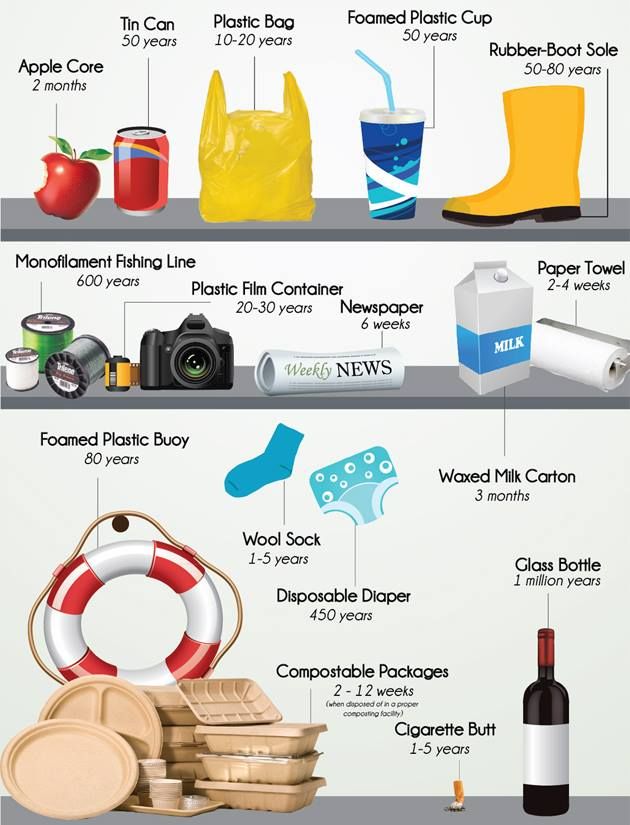 Therefore, most manufacturers produce racing tires with the minimum number of grooves necessary to comply with the regulations of these competitions. Otherwise, these are, as a rule, the same uncompromising racing tires that are not intended for public roads. The formal exception is the Pirelli Diablo Supercorsa SC. The Pirelli website states that this model is suitable for driving on public roads. nine0004
Therefore, most manufacturers produce racing tires with the minimum number of grooves necessary to comply with the regulations of these competitions. Otherwise, these are, as a rule, the same uncompromising racing tires that are not intended for public roads. The formal exception is the Pirelli Diablo Supercorsa SC. The Pirelli website states that this model is suitable for driving on public roads. nine0004
But those who have experience with this rubber know that this is an exclusively racing product, not much different from classmates. Caution for newbies. If you decide to use such tires in the city, counting on an unprecedented grip, you will be bitterly disappointed. It is almost impossible to warm them up to operating temperature on public roads. Even after a series of accelerations and decelerations, the sidewalls will remain cold, and you will be indescribably surprised to go into slippery with a completely childish tilt of the motorcycle. For this reason, you should not buy Dunlop D212 and Pirelli Diablo Supercorsa SC for next to nothing with a still “live” middle from riders after the track. Especially if you have never encountered this rubber model before, even on a karting track. nine0004
Especially if you have never encountered this rubber model before, even on a karting track. nine0004
Street legal racing cut
The main difference from the previous class is in the temperature regime. These tires hold up much better when cold and don't run as hot. As a rule, it is: 60-80°C. Accordingly, their maximum grip properties are slightly lower. But the best grip in a cold state allows them to be allowed on public roads. And if you get to the training track on your own, then these tires are the best choice. These are the fastest tires allowed on city streets. nine0004
The presence of this class of tires is primarily due to the specific requirements of amateur competitions. In such races, for reasons of economy, the use of heating pads is often prohibited. And so that novice racers do not get killed in the very first turn due to cold tires, the regulations require the use of road tires approved for operation at the DOP.
Racing rain tires
A separate class of racing tires is rain racing tires. Their task is to completely remove water from the contact patch, including when the motorcycle is tilted, as well as the maximum level of grip on wet asphalt. When driving on dry roads, such tires are subject to rapid wear, as they have a very soft composition. nine0004
Their task is to completely remove water from the contact patch, including when the motorcycle is tilted, as well as the maximum level of grip on wet asphalt. When driving on dry roads, such tires are subject to rapid wear, as they have a very soft composition. nine0004
Supersport tires
Designed for more aggressive driving than conventional road racing tires. But in terms of grip, they still fall short of street legal racing “cutting”.
Sport road tires
Designed primarily for powerful sports and urban motorcycles. Fully suitable for operation on public roads. The available grooves, most often, are enough to drain water from the contact patch in case of light rain. At the same time, such tires retain most of the positive qualities of their brutal racing relatives on the sports track. What's more, the amateur rider who trains once a week doesn't have to worry about reaching the optimum operating temperature and pressure. nine0004
nine0004
Sports tires go into operating mode much faster than racing tires, and their parameters in a warm state and “cold” differ not so significantly. But you should not be under any illusions about the ultimate capabilities of such tires in a race, even an amateur one. The fantastic traction properties of racing tires brought to operating temperature are unattainable for sports tires. Therefore, in extreme conditions, be careful and keep your sobriety of mind.
But the resource of such tires is not limited to a couple of races on the highway, and ranges from 4000 km. up to 7000 km., depending on the engine power, the owner's piloting style, and his love to burn rubber, performing rolling burnout. So, sports tires are a reasonable choice for the owner of a sports or fast road bike, looking at the track or karting track 1-2 times a month to brush up on the relevant skills. nine0004
Road touring tires
For this type of rubber, its resource is of particular importance, since it is such rubber that is most often used by motorcycle travelers in their many thousands of runs around cities and countries. In addition to long routes with different quality of coverage, on which the tourist tire must be equally predictable and safe, long trips are usually associated with a large mass of transported belongings, without which the life of a motorcycle tourist becomes dull and bleak. And the tourist motorcycles themselves, in terms of their curb weight, are increasingly approaching diesel locomotives. nine0004
In addition to long routes with different quality of coverage, on which the tourist tire must be equally predictable and safe, long trips are usually associated with a large mass of transported belongings, without which the life of a motorcycle tourist becomes dull and bleak. And the tourist motorcycles themselves, in terms of their curb weight, are increasingly approaching diesel locomotives. nine0004
Therefore, a road touring tire must not only withstand long runs, but also withstand high loads well. At the same time, the requirements for the quality of adhesion give way to high predictability and "motorcycle feel" that allows even an inexperienced motorcyclist to feel and stop the development of slips and drifts at an early stage. The main task is not to pass the route at the highest speed, but to reach the final destination in the safest possible mode, while maintaining control over the motorcycle in any weather. nine0004
Accordingly, the water drainage grooves in such tires are more developed. And some models are specially optimized to maintain performance on wet roads. The resource of such tires, as a rule, ranges from 10,000 to 20,000 km. Best of all road-touring tires are suitable for city and travel on road and tourist motorcycles. Moreover, for the latter, given their large mass, special “reinforced” versions of tires are sometimes produced.
And some models are specially optimized to maintain performance on wet roads. The resource of such tires, as a rule, ranges from 10,000 to 20,000 km. Best of all road-touring tires are suitable for city and travel on road and tourist motorcycles. Moreover, for the latter, given their large mass, special “reinforced” versions of tires are sometimes produced.
Dual purpose tires
The high popularity of enduro motorcycles in Europe is beyond the understanding of domestic brains. Especially if you take into account the average European quality of the road surface. But the fruits of this popularity can be enjoyed by our compatriots who operate all-terrain vehicles.
Tires for "parquet" crossovers
The real heyday of this class of tires happened immediately after the appearance in 2010 of the Ducati Multistrada motorcycle, as well as many of its followers. Just like the Porsche Cayenne and BMW X5 crossovers, these bikes are only nightmares for serious off-road use. But nothing prevents them from amusing the pride of the owners on a trampled primer. nine0004
But nothing prevents them from amusing the pride of the owners on a trampled primer. nine0004
But back to tires. In terms of its composition and parameters, this is, as a rule, a specialized tourist rubber capable of withstanding long distances, having a tread that provides the minimum necessary “hook” on unpaved areas. It is designed for large and powerful motorcycles, has a high load capacity and speed index, is comfortable, provides good handling at high speeds and wet roads.
The resource of such tires, as a rule, reaches 20,000 km. And also, due to the obligatory presence of exclusively road dimensions in such models, every city madman can put them on his blue Drozd and rush off towards Magadan. nine0004
All-terrain tires
But, unlike in the automotive industry, the rise of the parquet crossover motorcycle class hasn't dampened the popularity of true touring enduros like the Bavarian Great Goose. Such motorcycles can travel on roads with any surface, as well as without it.
Therefore, tires designed for driving on asphalt and dirt in a ratio of 50/50 (as an option: 60/40) are produced by every world-class motor rubber manufacturer. Their task is to provide an acceptable grip on both dirt and asphalt roads. nine0004
The resource of such tires, as a rule, ranges from 13,000 to 15,000 km. It should be noted that the higher the rubber resource, the larger the contact patch of the tread with the coating. Therefore, with the growth of off-road characteristics of tires, the resource decreases. Also, the harder the composition of the rubber, the higher its survivability. But grip on wet roads with hard rubber will be noticeably worse.
Off-road tires
The most off-road, among the “civilian” tires, designed for the most desperate travelers and rally marathon participants. They allow you not to think about the presence of any road under the wheels. nine0004
These tires have a very strong carcass that provides the necessary margin of safety, which allows you to move on some models even on a punctured wheel. Often, a slight reduction in pressure will achieve more even wear and improve traction on wet pavement.
Often, a slight reduction in pressure will achieve more even wear and improve traction on wet pavement.
The resource of such tires is approximately 6000 - 12000 km.
Off-Road Sport Tires
Not for highway use only are not certified and do not have an OTP approval. These are special tires for motocross and enduro, not designed for high speeds. True, there are separate models from this category that are approved for use on the roads, but this is more of a nod to consumers. The resource on the roads of these tires is small, road characteristics, such as handling and braking, also leave much to be desired. nine0004
Therefore, we can rather talk only about the possibility of driving on these tires to real off-road without changing shoes. They have a diagonal design and are designed for use with chambers or mousses. They are mainly produced in dimensions R21, R19 and R18 and very rarely - R17. These tires can be divided into motocross tires and enduro tires.
In each of these segments there are sports-oriented models, and amateur formats are more versatile (usually these are old models that no longer satisfy athletes, but are in demand). Unlike many other types of motor tires, motocross and enduro tires are consumables. They must work out their task with maximum effect and, by and large, the residual resource is not of interest to manufacturers. nine0004
Motocross tires
Motocross is a very intense, short ride with high shock and alternating loads from acceleration to braking on a pre-prepared track with relatively uniform soil. To do this, the cross tire has a hard cord, high and aggressive lugs and a relatively hard rubber compound.
Motocross tires are available in different types for different types of terrain. They differ in the tread pattern and the composition of the rubber used. The main pattern: on hard ground, tires with wide lugs and more elastic rubber are used, on soft ground - with rare tread blocks and harder rubber. The tire pressure used is 1.2-0.8 kPa: the softer the ground, the higher the pressure. nine0004
The tire pressure used is 1.2-0.8 kPa: the softer the ground, the higher the pressure. nine0004
Enduro competition tires
Enduro competitions include other additional types of obstacles: logs, fords, stones, rocks. To effectively overcome them, tires are used that combine the properties of tires for motocross - for overcoming unpaved areas, and trial - for other obstacles. For this, a very soft tire carcass is used, the maximum width and elasticity of the rubber compound for better grip.
The FIM European Enduro regulation provides for a limitation on the height of the tread used, so the block height on these tires is lower than on motocross tires. These tires are used with mousses instead of tubes to maximize the effect of low pressure inside the tire without the fear of blowing or spinning the tire. nine0004
All-terrain tires
Also, most manufacturers produce all-round types of tires, amateur format, combining cross-country and enduro characteristics. (Usually these are old models that no longer satisfy athletes, but are in demand.) Among the tires for enduro, there are also models of a universal format that are suitable for use in both cartri-cross and enduro, can be used with tubes and mousse.
(Usually these are old models that no longer satisfy athletes, but are in demand.) Among the tires for enduro, there are also models of a universal format that are suitable for use in both cartri-cross and enduro, can be used with tubes and mousse.
Running in road tires
Having bought and installed new tires on a motorcycle, do not rush to check its adhesion at maximum speeds and angles of inclination. Each new tire must undergo a run-in, during which its carcass, bandage and rubber layer are run in and reach the design characteristics. It is believed that the distance is 100 km. enough to break in a new wheel. After passing it, do not forget to check the pressure in the wheel, as well as inspect it for proper fit and possible geometry violations. If there are no problems, the wheel is ready for full operation. nine0004
It must be remembered that most of the motor rubber models are coated with a special compound before use, which prevents it from drying out and aging during storage. It is believed that rubber coated with this composition retains its properties for five years. After installing a new wheel, you must carefully erase this layer during break-in, gradually increasing the angle of the motorcycle to the maximum values \u200b\u200bthat you use during operation. But remember that by erasing the protective composition, you start the process of drying the rubber compound. nine0004
It is believed that rubber coated with this composition retains its properties for five years. After installing a new wheel, you must carefully erase this layer during break-in, gradually increasing the angle of the motorcycle to the maximum values \u200b\u200bthat you use during operation. But remember that by erasing the protective composition, you start the process of drying the rubber compound. nine0004
And after 2 years, regardless of the mileage, the wheel will need to be changed. It must be remembered that tires require running-in not only before operation, but also after winter storage. A layer of dried rubber forms on the surface of the wheel, which must be carefully wiped off during the first rides of the new season.
Tire pressure
If you bought your motorcycle new from an authorized dealer, it must have a sticker indicating the recommended pressure for the front and rear wheels. As a rule, this information is placed on the rear swingarm of the motorcycle. In the future, most motorcyclists are guided precisely by the numbers indicated in it, naively believing that they have optimal pressure for all occasions. In fact, the values indicated on the pendulum, at best, are suitable for rubber, which the motorcycle is equipped with at the factory. nine0004
In the future, most motorcyclists are guided precisely by the numbers indicated in it, naively believing that they have optimal pressure for all occasions. In fact, the values indicated on the pendulum, at best, are suitable for rubber, which the motorcycle is equipped with at the factory. nine0004
In reality, in order to find the optimal tire pressure, we need to take into account not only the motorcycle model, but also the tire model, the weight of passengers and luggage, as well as the conditions of this particular trip. And the first thing you need to build on is the rubber model installed on the motorcycle. Each motorcycle manufacturer posts on its website information about the recommended pressure in each of its tire models.
These data take into account not only the features of the type of motor rubber we are interested in (tourist, sports, etc.), but also the design features of each model and the technologies used in it. This is especially true when the motorcycle is used "not for its intended purpose. " nine0004
" nine0004
For example, when a sportbike is fitted with touring tires and set off on a journey; or when a road builder is used for kart training with uncompromising racing slicks. Remember, in such cases, you need to focus not on the recommendations of the motorcycle manufacturers, but on the information of the engineers who developed your tire model.
But that's not all! If we return to the ground and look at the real operating conditions of motor tires, we will see that on the same tires someone goes to work and to a party place, someone travels to neighboring regions and countries, and someone does not get out from the karting track. How to adjust the pressure in each of these cases? nine0004
General recommendations will be quite simple. Let's say you have a road bike with the recommended pressure on the swingarm: 2.25 BAR at the front and 2.5 BAR at the rear. If you have road or road-sport tires, then this pressure is more suitable for touring on a lightly loaded motorcycle. In this case, the contact patch will be smaller, the tire will dent less, and, accordingly, its wear will be slower. If you are traveling with a passenger and several cases for very long distances and at high speeds, it is better to increase the pressure in the rear wheel to 2.8 - 3.0 BAR. nine0004
In this case, the contact patch will be smaller, the tire will dent less, and, accordingly, its wear will be slower. If you are traveling with a passenger and several cases for very long distances and at high speeds, it is better to increase the pressure in the rear wheel to 2.8 - 3.0 BAR. nine0004
After running several thousand kilometers in this mode, the rear wheel will most likely form a flat ground. But the carcass of the tire will not suffer, and there will be no danger of its destruction. The pressure in the front wheel should not be raised above 2.5 BAR on powerful heavy motorcycles, and 2.3 BAR on medium-sized vehicles. If you increase the pressure in the front wheel even more, then the tire life will not increase from this, and the likelihood of losing grip during braking will increase.
In the city, motorcyclists most often ride without a passenger, make more maneuvers, accelerate and brake. The importance of the tire resource in this case gives way to grip properties. The cost of a mistake, loss of traction and unplanned slipping can be unreasonably high. Under these conditions, on an average motorcycle weighing about 200 kg, in road and sport tires, it makes sense to maintain a pressure of about 2.2 BAR in both tires. Thus, we increase the contact patch and help the rubber warm up faster for better grip. Naturally, the life of the tire decreases with decreasing pressure. But you need to be aware of what is more important: the durability of the rubber or the traction reserve. nine0004
The cost of a mistake, loss of traction and unplanned slipping can be unreasonably high. Under these conditions, on an average motorcycle weighing about 200 kg, in road and sport tires, it makes sense to maintain a pressure of about 2.2 BAR in both tires. Thus, we increase the contact patch and help the rubber warm up faster for better grip. Naturally, the life of the tire decreases with decreasing pressure. But you need to be aware of what is more important: the durability of the rubber or the traction reserve. nine0004
On powerful liter motorcycles, the load on the rear wheel - and therefore wear - is even higher. And only the owner himself chooses the balance between road grip and the wear rate of the rear wheel.
Finally, a go-kart or racing track. A place where tire resource does not play any role. Only the coupling parameters of the rubber with the canvas of the race track are important. Numerous experiments and experiments undertaken by people who regularly test motorcycles on karts and racing tracks - motorcycle journalists, experts and athletes - show that most sports, road and road-touring tires provide the best traction at a pressure of 2.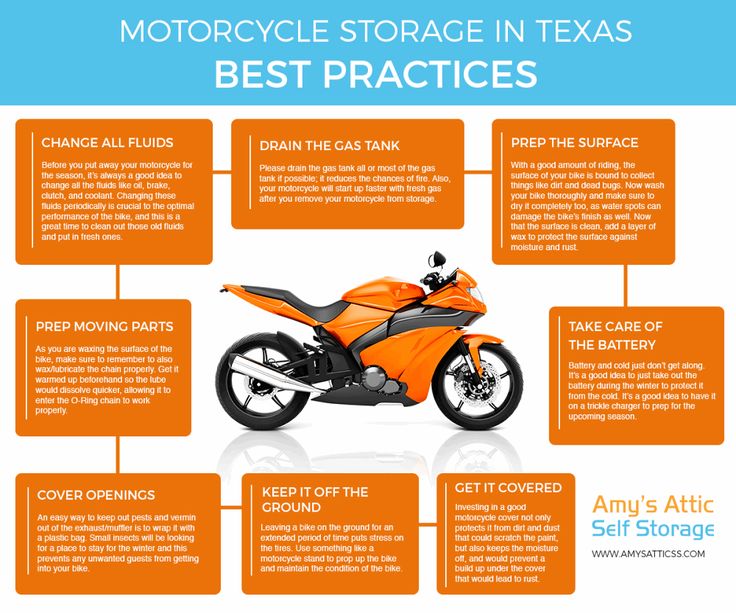 1 BAR - on the front wheel , and 1.9BAR - on the back, on cold tires. For some rubber models, this value may differ slightly, but in most cases its difference fits into the error of a conventional pressure gauge manufactured in the People's Republic of China.
1 BAR - on the front wheel , and 1.9BAR - on the back, on cold tires. For some rubber models, this value may differ slightly, but in most cases its difference fits into the error of a conventional pressure gauge manufactured in the People's Republic of China.
Lowering the pressure further does not add traction and only worsens the handling of the motorcycle. When the pressure in the front wheel drops below 1.9 BAR, when cornering, the bike's handlebars begin to bend, that is, it tries to turn in the direction of the turn. If the rear tire loses pressure to 1.6 BAR, then in corners the rear of the motorcycle begins to float on the pavement, there is a feeling that is best described by the word “squish”. nine0004
Considering that the pressure applied on sports tracks allows for the greatest traction properties of motor tires, many people use it when driving in the city, where the margin of the handle can be a great help when making detours or during emergency braking. But you need to understand that tire wear at such a pressure will be higher, and its resource will be less.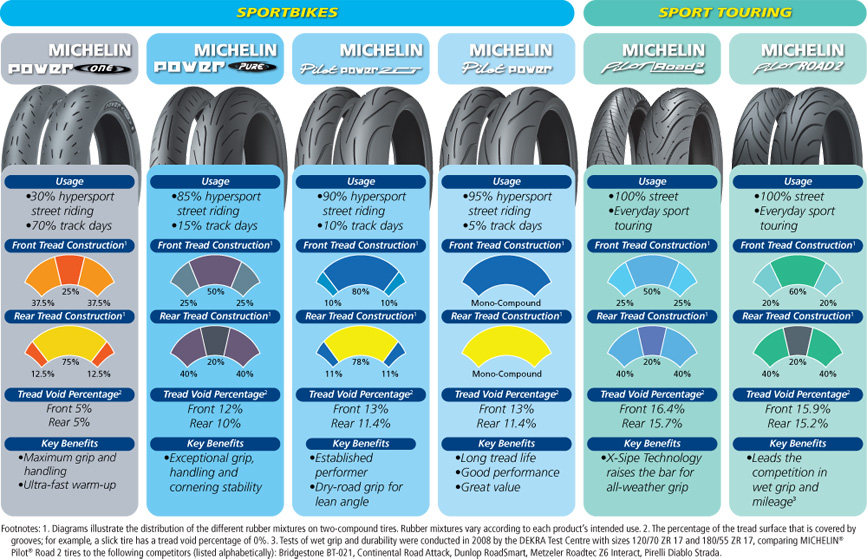
Special mention should be made of powerful sport bikes, which often have a recommended pressure of 2.5 - 3.0 BAR on the swingarms. It must be understood that such motorcycles wear tires much more intensively. And the resource of the same rear wheel model on a road bike and on some Eradin will differ by 2 times. Partly recommended high pressure allows you to slightly extend the difficult life of the “cylinders” on such motorcycles. But don't be under any illusions. When you try to go through a "knee" turn, such a high pressure in the wheel can easily send you into a slippery. nine0004
If, on the other hand, you regularly train on sports tracks, then, most likely, special racing tires are already installed on your motorcycle. As already mentioned, this rubber has a special thermal regime. And if for ordinary sports rubber the working temperature is considered to be 50 ° C - 60 ° C, then the temperature of racing rubber in a warm state reaches 100 ° C. Naturally, the pressure in such rubber in the last laps of the race and in the cold state is seriously different.
As a rule, the pressure in the rear wheel "cold" in such tires ranges from 1.4 BAR to 1.6 BAR, and in the front - from 1.5 BAR to 2.1 BAR. Such low numbers are often shocking to beginners who see the 2.9 on the swingarm of their new "liter" sportbike.BAR. But it is these indicators that allow the tires to quickly warm up to the design temperature and increase the pressure in the wheels to operating values.
In this case, if you are not an experienced road rider who plays with tire pressure, adjusting the behavior of the motorcycle to the characteristics of different tracks, we recommend that you strictly adhere to the values recommended for your particular racing tire by its manufacturer.
Cross tire pressure
Motocross tire pressure is 1.2-0.8 BAR. The main rule: the softer the soil, the higher the pressure. In this case, it is necessary to take into account both the properties of a particular track and the style of the rider. nine0003 In classic enduro, mousses with different pressures are used instead of chambers: 0.4-0.9 BAR, depending on the type of tracks.
nine0003 In classic enduro, mousses with different pressures are used instead of chambers: 0.4-0.9 BAR, depending on the type of tracks.
Selection of tires of non-standard size
On various forums, you can often find questions from novice motorcyclists regarding the possibility of installing a rear wheel wider than the stock motorcycle. Most often this is due to the fact that in their eyes a wide rear wheel looks more sporty and attractive compared to a narrow one. Often, some draw analogies with car wheels of a larger diameter and width. We will not argue that no matter how wide the wheel is on the old Super Truck, in the eyes of beautiful strangers, it still will not compete with the shiny and illuminated Golda. And just try to understand the physics of the process. nine0004
So, what can we expect if we firmly decided to install a non-standard rear wheel with a wider width on the motorcycle.
The first problem we will face is that the rim remains the same width as before. That is, a wheel of greater width, stretched on a narrow rim, does not become wider. It flattens and becomes higher than stock. Its diameter grows, the speedometer starts to lie, the back of the motorcycle rises a little. But most importantly, the tire profile carefully calculated by the manufacturer is violated. nine0004
That is, a wheel of greater width, stretched on a narrow rim, does not become wider. It flattens and becomes higher than stock. Its diameter grows, the speedometer starts to lie, the back of the motorcycle rises a little. But most importantly, the tire profile carefully calculated by the manufacturer is violated. nine0004
In 2012, in the Russian championship SHKMG, a single type and size of rubber was approved for all classes and types of motorcycles - 190/55/17. Given that the rear wheel disc of 600cc sportbikes is designed for size 180/55/17. Such a replacement did not bring big changes to the behavior of the motorcycle. Although some athletes, for example, Ilona Sergeeva, noted the worst grip on non-standard rubber in the extreme angles of inclination.
Another example of using a narrow rim and wide tire is the KTM RC 390 and KTM Duke 390. They come stock with a 150/60-17 rear wheel. This means that we will not be able to use the entire surface area of the tire, and the contact patch will be lower than calculated for this model in this size.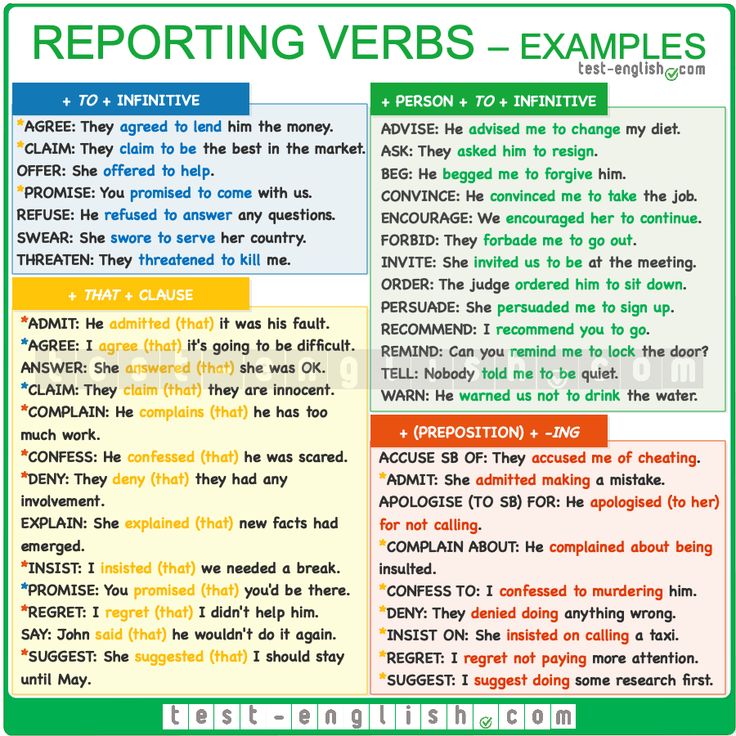 All this raises questions regarding the optimality of the selected rubber size. We noticed this nuance back in May 2014, during the KTM Duke 39 test.0. And in July 2015, while shooting the RC 390 at the Firsanovka karting track, MotoRRika team rider Ivan Gorev did not take into account this feature of the motorcycle and sent KTM into slippery conditions, missing the rear wheel.
All this raises questions regarding the optimality of the selected rubber size. We noticed this nuance back in May 2014, during the KTM Duke 39 test.0. And in July 2015, while shooting the RC 390 at the Firsanovka karting track, MotoRRika team rider Ivan Gorev did not take into account this feature of the motorcycle and sent KTM into slippery conditions, missing the rear wheel.
If we're not happy with a simple tire change while keeping the stock rim, and we decide to go further with a wider rear rim on our bike, then other problems stand in our way. It is necessary that the disk and the wheel are normally located in the pendulum and do not touch it when moving. The driven star of a non-standard disk can be shifted to the side relative to the leading star, which will quickly "finish" the chain of the motorcycle. If we managed to get around all these problems, then, as planned, we get a motorcycle with a rear wheel wider than the original. nine0004
If we try to ride such a motorcycle, we will notice that its handling has noticeably deteriorated.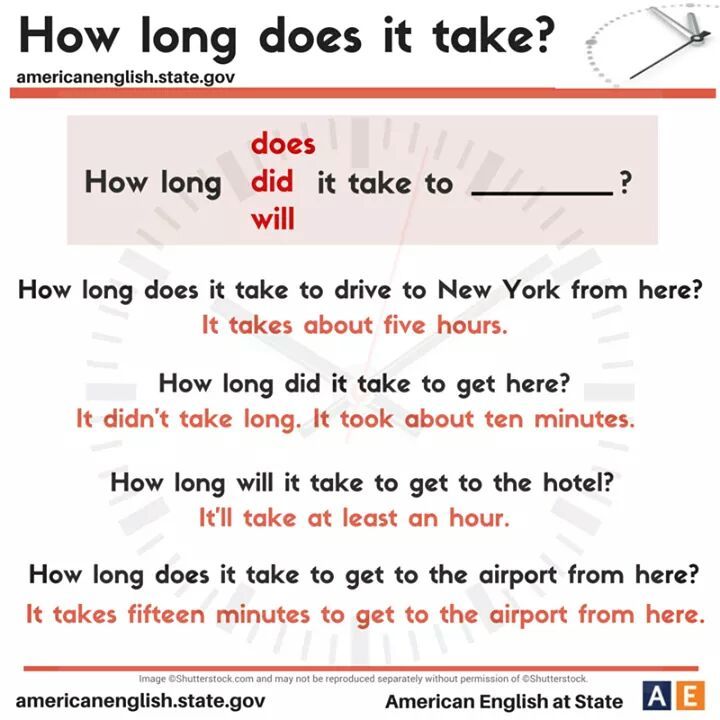 And now it takes more effort to "put" the bike in a turn. Why did it happen? The fact is that a motorcycle with a wide rear wheel has to lean at a greater angle, applying more effort, to pass the same turn at the same speed. That is why engineers and experts are well aware of the rule: the more wheels already installed on a motorcycle, the more willingly it “dives” into a turn and steers easier. nine0004
And now it takes more effort to "put" the bike in a turn. Why did it happen? The fact is that a motorcycle with a wide rear wheel has to lean at a greater angle, applying more effort, to pass the same turn at the same speed. That is why engineers and experts are well aware of the rule: the more wheels already installed on a motorcycle, the more willingly it “dives” into a turn and steers easier. nine0004
Therefore, even on powerful "liter" sportbikes, for which every square millimeter of wheel grip with asphalt is worth its weight in gold, you rarely see rear tires wider than 190mm. or 200mm.
Wheel marking
180/55 ZR 17
Profile width in mm, 180.
Profile height in percent of width, 55.
Tire design radial, ZR.
Rim diameter in inches, 17.
M/C is an abbreviation for motorcycle (found on tires that have car sizes). nine0003 73 - load index.
W - speed index.
Radial - radial tire construction.
Tubeless - tubeless (sometimes referred to as TL), TT (Tube Type) - chambered.
Continental is the name of the manufacturer.
ContiRoadAttac2 GT is the name of the model.
<=Rear - the arrow indicates the direction of rotation of the wheel
www.conti-moto.ru - the manufacturer's website.
The DOT abbreviation indicates that the tire complies with the safety regulations of the US Department of Transportation.
The letter “B” in a circle is the approval mark according to the test results under UNECE regulations, the number next to it is the country where the test was carried out. nine0003 Date of manufacture of the tire - the last four digits in an oval, for example 3811 38th week of 2011. How to warm up a car in winter
Dear readers! Our article is for informational purposes only, which does not imply the provision of the services described in the article!
According to a survey of drivers conducted by a major automotive portal, less than 40% of drivers constantly warm up the car before driving, 15% do not warm up, the remaining - on a case-by-case basis. Even those who do not start driving immediately after starting the engine are not always sure that they are warming up the car correctly and for a sufficient amount of time.
Even those who do not start driving immediately after starting the engine are not always sure that they are warming up the car correctly and for a sufficient amount of time.
In the article we will tell you why driving with an unheated car engine is dangerous , how long it takes to warm up a car in winter and how to quickly warm up a car in winter .
Auto mechanics insist that it is not worth starting heavy traffic immediately after starting the engine in any season. Even in summer, it is worth waiting at least a few seconds until the process fluids warm up to a certain temperature and fill the system in order to prevent critical wear of the mechanisms. nine0004
In winter, the load on the engine, cooling system and interior heating increases, defects and malfunctions are aggravated.
Even if the engine oil is changed to winter oil in time, it thickens at low temperatures, and until it reaches operating temperature, it fills the system more slowly. It is necessary to wait a few minutes at smooth idle for it to warm up and work to the fullest. - effectively lubricates the mechanisms. nine0004
It is necessary to wait a few minutes at smooth idle for it to warm up and work to the fullest. - effectively lubricates the mechanisms. nine0004
When heated, the metal expands, when frozen, it shrinks. When the vehicle is left in the cold for a long time, the gaps between the mechanisms increase, which leads to accelerated wear. All mechanisms come into line only when a certain temperature is reached, which occurs only a few minutes after starting the car at idle.
An unheated vehicle consumes more fuel than under normal conditions. The air/fuel mixture is slower and more complex, especially in diesel engines.
A cold engine is unstable, “sneezes”, decreases dynamics.
Due to the difference in temperature inside the passenger compartment and outside, condensation settles and freezes on the windows.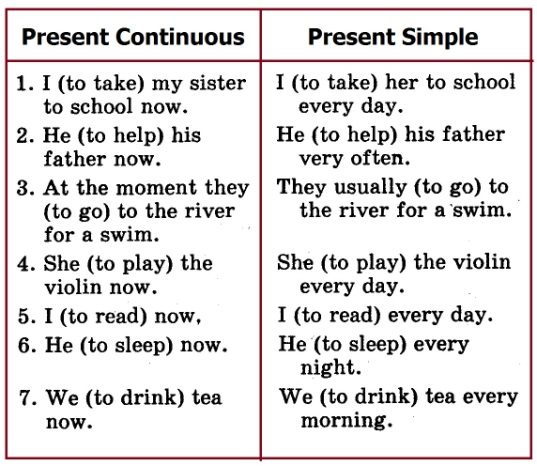 In the case of the windshield, this problem is solved by turning on the heated windshield. When driving with a warm engine, all windows are heated gradually and automatically. If the driver "sat down and drove off", he has to turn on the forced electric heating of the windshield and rear window, which greatly discharges the battery. nine0004
In the case of the windshield, this problem is solved by turning on the heated windshield. When driving with a warm engine, all windows are heated gradually and automatically. If the driver "sat down and drove off", he has to turn on the forced electric heating of the windshield and rear window, which greatly discharges the battery. nine0004
We do not recommend turning on the electronics before starting the engine to "revitalize" the battery. Starting the engine without warming up the battery in this way is less risky. It has been experimentally proven that to warm up the frozen electrolyte, it will be necessary to turn on the LED headlights for at least 5-10 minutes. Switching on the electronics for a short time can completely discharge the battery, which works at a third of its strength in the cold.
Instruction how to properly warm up a car:
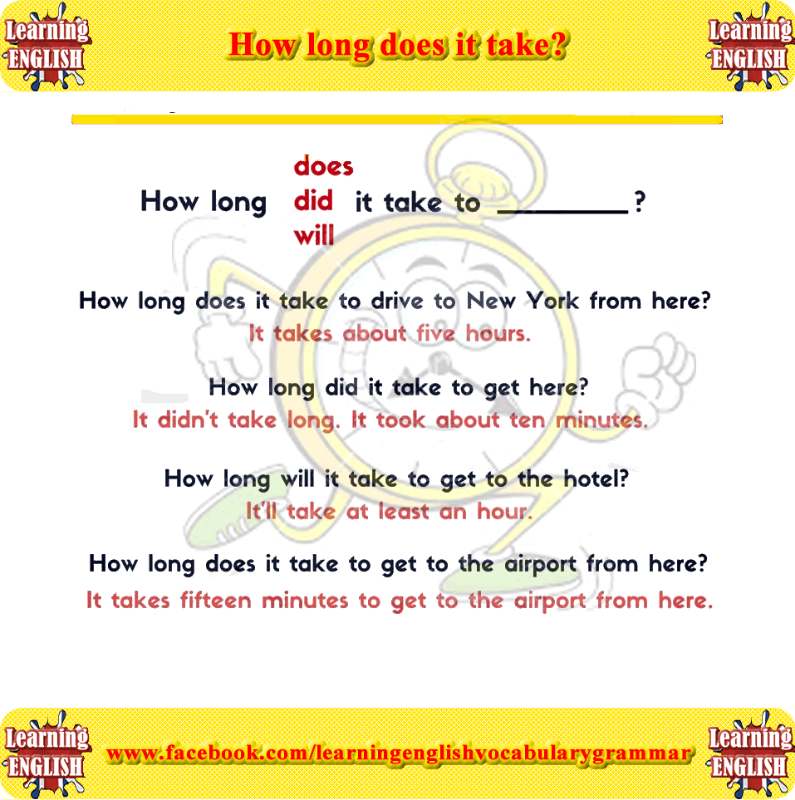
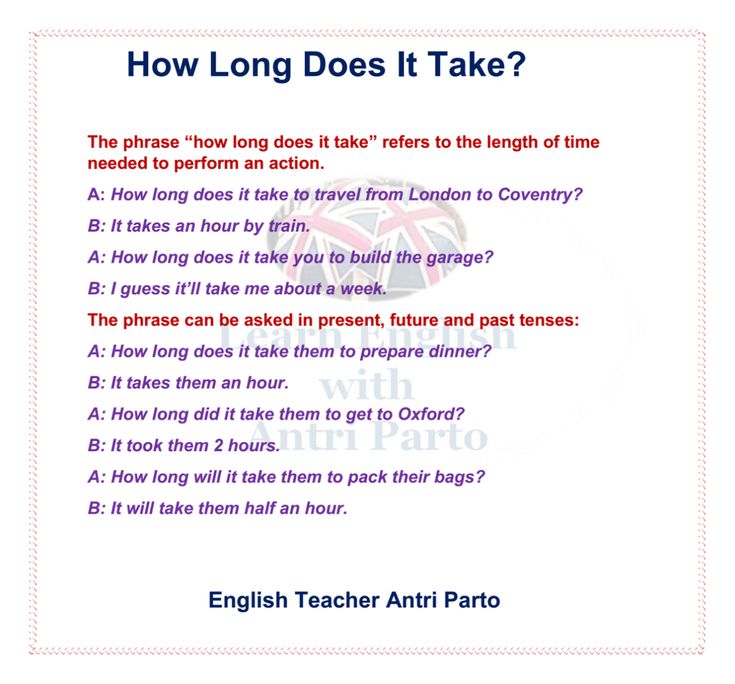
The steps to warm up the engine of a car take a different period of time depending on how long the car has been standing still and what temperature range it was in the environment. The warm-up rate also depends on the engine displacement, engine efficiency, the presence of malfunctions (a clogged cabin filter, a heater radiator contaminated inside and out, a faulty thermostat, etc.), interior dimensions. nine0004
The averaged data looks like this:

The warm-up time of a car in winter can be reduced without dubious folk wisdom, by using special tools.
 The unit can be controlled remotely or programmed to start the system. It heats the liquid up to 85 degrees, and then goes into standby mode, when the temperature drops, it automatically turns on the heating. Among the disadvantages of this method of fast warming up the car in winter include fuel consumption, but it is 2 times lower than the excessive fuel consumption when driving on a cold engine.
The unit can be controlled remotely or programmed to start the system. It heats the liquid up to 85 degrees, and then goes into standby mode, when the temperature drops, it automatically turns on the heating. Among the disadvantages of this method of fast warming up the car in winter include fuel consumption, but it is 2 times lower than the excessive fuel consumption when driving on a cold engine. To effectively warm up the interior of a car in winter it is recommended not to turn on the heating for 5 minutes so that the heat does not go away, but remains in the generator, so the system will warm up faster. There is logic in this, but we do not recommend using this method, because when after 5 minutes you turn on the windshield heating, a stream of hot air will rush onto the iced part, which will inevitably lead to cracks. nine0004
Among the effective ways to quickly warm up the interior:
